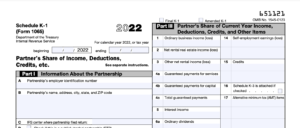Let me be clear from the beginning, there is a demand for a stable value, inflation-resistant currency in the world. It’s not Bitcoin. Bitcoin might be the first through the door, it may revolutionize the zeitgeist ways we discuss the usage of currency and it might be an early aid in getting people around the world out of using their destabilized local currencies. But it will more likely be the myspace of currencies. Inflation Hedge: Bitcoin can be a store of value Bullish Bitcoin advocates have routinely promoted the digital coin as a reliable store of value. They are convinced the digital currency can be a store of value assets like, commodities, or currencies that maintain their value. So many of these advocates see bitcoin as an “inflation hedge.” And while it might be, I think there is a far greater concern that it outpaced any reasonable amount of hedging it was capable of. In 2020 inflation on the CPI was 2.3%, arguing that the buying power of U.S. dollars shrunk by 2.3%, but the bitcoin rose 66%. I would contend that while a small portion of the change was the result of inflation, the other 63.7% was pure speculation. Let’s look at other stores of value, say copper. When the price of copper increases by say 6% in a year, the first 2.3% can reliably be because the buying power of cash deteriorated in comparison to copper over the course of the year. The 3.7% delta is due to increased demand for copper usually as a result of its utility. Thus, the increase is driven by underlying market functions for copper. I think the same argument should be made for bitcoin, that the first amount it increases in value is the result of inflation and the second is the result of speculation on inflation. The speculation element is almost 29 times higher than the inflation rate in 2020. I think with that ratio of inflation hedging capacity to speculation being so wide it cannot be a reliable replacement for traditional inflation hedges. Let’s then add a more practical element, Bitcoin fever is not the honest result of people hedging their inflation bets. I don’t believe most of them are concerned about the pace of inflation that they can justify a 66% run-up as a concern for the Federal Reserves’ buying rate. It’s more likely the result of seeking a high return on assets. This is then where I am truly concerned about Bitcoin (or any cryptocurrency) being considered a store of value. Let’s then take a look at the utility of Bitcoin. Some of the value of other stores of value is that they have an intrinsic utility. Arguably, they were a reliable “store of value” before they were thought of that way by markets. Since the dawn of commerce, traders have used precious metals and industrial metals to store value. They have a legacy of usefulness. Gold was made into jewelry early, then coinage, then dentistry, and now it’s mission-critical in aerospace and technology. It has always had a drop-dead value because of its innate function. So if you were worried about the governing power that developed a currency, in 700BC or 2021, dropping to zero, the store of value would still have some intrinsic usefulness. I’m not sure the same could be said for bitcoin, because unlike other commodities and precious metals I can’t make a house with it, mold it into utensils, or wear it around my neck. Bitcoins value without its relationship to other currencies is $0. Market Hedge: Bitcoin can hold value when markets fall For this, I think it’s important to look at the behaviors of the people who are buying both the market and the underlying fundamentals of each. I think that it is true, that both the market and Bitcoins are inflation-hedged assets. Only one of these makes sense over time. Additionally, we look at the correlation of the greater market to Bitcoin. In terms of volatility, like March of 2020, we saw equity high volatility in Bitcoin. In times of expansion, we see similar directionality. I think a greater, more lasting argument can be made that Bitcoin’s success and the success of the market are the results of the same underlying causes of liquidity. As we generate more money in the world, the price of assets rises, this shouldn’t be a shock. What does become a point of distinction between the two is that while Bitcoin can arguably “inflate” as long as the de facto Crypto is still Bitcoin. What it cannot do, is provide the investor cash flow in the future. The market however is the representation of ownership over future cash flows. So when markets “sell-off” there is a bottom-rung where the price of future earnings is too appealing and recruits investors back to the marketplace. With no such promise of future cash flows from bitcoin, what becomes the bottom rung? For most commodities, it becomes its intrinsic value, for Bitcoin that is $0. Fixed Asset: “Bitcoin is a fixed amount and there will never be more” This is kind of an illusion. Yes, there will be a fixed amount of Bitcoins, but not a fixed amount of cryptocurrencies. Each currency type will have its own value, function, and framework. So if in the infinitely expansive ecosystem of “coinage” something comes along that can supplant the “fixed” appeal of bitcoin, and have some other benefit, the appeal of Bitcoin erodes overnight. Say for example a “fixed amount currency”, more granular than bitcoin, or fixed amount and acceptable in Costco whatever the case is, becomes the Bitcoin+ currency of choice. Then it becomes a question of “How long will people accept my bitcoin?” and then it’s a run for the door trying to not be the last person holding a tulip. The race will become how many Bitcoin+ will I be able to exchange for my Bitcoin. So the argument that it’s “digital gold” is valid until there


